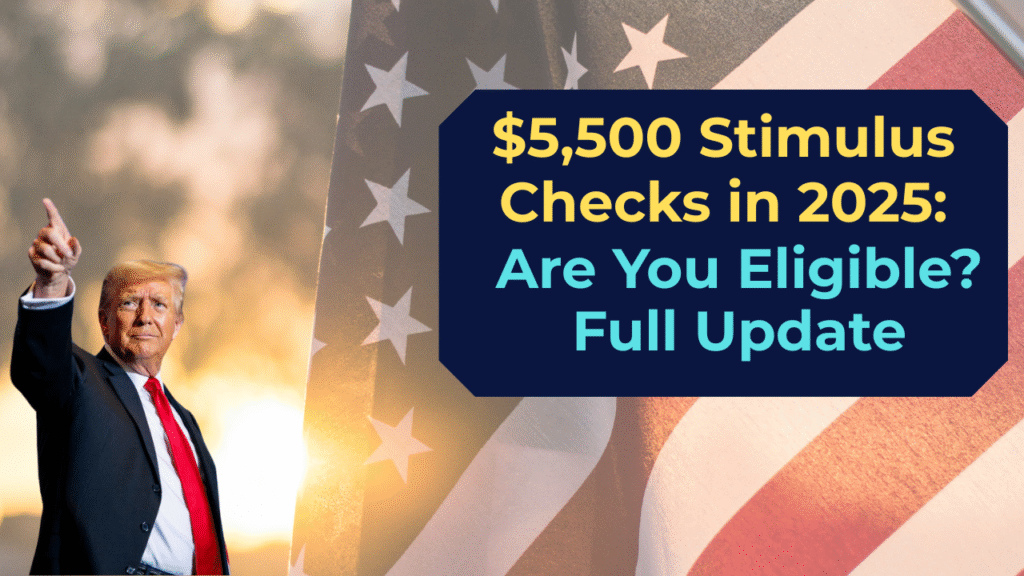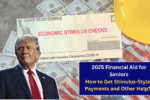As the U.S. economy continues to recover from the disruptions of the past few years, the federal government is reportedly preparing another round of financial relief. The proposed $5,500 stimulus checks in 2025 have captured national attention, stirring questions about eligibility, rollout timelines, and whether this initiative applies to all Americans.
Here’s a detailed look at what we know so far about the $5,500 stimulus checks, who qualifies, and how the program may unfold in 2025.
What Are the $5,500 Stimulus Checks?
The proposed $5,500 stimulus checks are part of a broader economic relief package designed to assist individuals and families coping with rising living costs and stagnant wages. While not yet officially confirmed by the federal government or Congress, discussions around this financial support have been fueled by growing calls for continued aid especially for lower- and middle-income Americans.
These stimulus payments would be a direct cash transfer to eligible recipients, similar to the three rounds of Economic Impact Payments distributed during the COVID-19 pandemic. The checks are intended to provide immediate financial relief and stimulate consumer spending to strengthen the economy.
Why Is Another Stimulus Being Considered?
Several factors are prompting lawmakers to consider another stimulus round:
- Inflation and cost-of-living pressures: While inflation has cooled compared to its 2022 peak, essential costs such as groceries, housing, and healthcare remain high.
- Stagnant wage growth: For many Americans, wages have not kept pace with inflation, eroding purchasing power.
- Economic uncertainty: Concerns about a potential slowdown or recession continue to drive interest in preventive fiscal measures.
- Mid-term political promises: With the 2024 elections concluded, some lawmakers are under pressure to fulfill campaign pledges to support working families.
Who Is Eligible for the $5,500 Stimulus Checks?
While final eligibility criteria have not been officially announced, early reports and policy drafts suggest that the guidelines may be modeled after previous stimulus programs.
Expected Eligibility Criteria:
- Income Limits: Individuals earning up to $75,000 annually and married couples earning up to $150,000 may qualify for the full amount. Payments may phase out for those above these thresholds.
- Filing Status: Taxpayers must have filed a 2023 or 2024 tax return.
- Dependents: Additional amounts may be available for dependents under the age of 17, though this has yet to be confirmed.
- Citizenship/Residency: U.S. citizens and legal residents with valid Social Security numbers are likely to qualify.
- SSI, SSDI, and VA Benefits Recipients: Based on precedent, individuals receiving Social Security, Disability, or Veterans Affairs benefits may also be included.
It is important to note that eligibility details are still under review, and the final rules may vary once official legislation is introduced.
How Will the Stimulus Be Distributed?
If the $5,500 stimulus plan is approved, distribution is expected to occur in phases—likely through the Internal Revenue Service (IRS). The process will resemble previous Economic Impact Payments:
- Direct Deposit: For individuals with banking information on file with the IRS.
- Paper Checks or Debit Cards: For those without direct deposit details.
- Non-filers: A dedicated portal may be created for low-income Americans who do not normally file taxes to claim the payment.
The government is expected to prioritize faster delivery using existing IRS infrastructure.
Timeline: When Can You Expect the Checks?
As of now, there is no confirmed release date for the $5,500 stimulus checks. The proposal is still in preliminary stages and would need to pass through Congress and be signed by the President before implementation.
If passed early in the year, payments could begin by mid to late 2025. However, delays are possible depending on legislative negotiations, particularly around the federal budget and debt ceiling.
How to Prepare
While waiting for further updates, Americans can take the following steps to stay ready:
- File your taxes: Ensure your 2023 and 2024 tax returns are filed to be considered for eligibility.
- Update IRS information: Confirm your mailing address and direct deposit details are current with the IRS.
- Monitor official announcements: Track updates from the IRS and the U.S. Department of the Treasury for accurate information.
Common Scams to Avoid
Stimulus-related scams were rampant during earlier rounds of payments. Protect yourself by remembering:
- The IRS will never call, text, or email you to verify payment or banking information.
- Avoid clicking on suspicious links claiming to offer early access to the stimulus.
- Only trust information from official government sources.
Public and Political Reaction
The idea of a $5,500 stimulus check has received mixed responses. Supporters argue it’s necessary to provide relief amid ongoing economic pressures. Critics, on the other hand, are concerned about inflationary impacts and increasing federal debt.
Economists suggest that well-targeted relief could help reduce inequality and boost economic growth if paired with responsible fiscal measures.
Final Thoughts
While the $5,500 stimulus check for 2025 remains speculative for now, the ongoing discussions reflect a broader debate about how best to support Americans in uncertain economic times. If implemented, this payment could offer significant relief to millions of households.
Until then, staying informed through official government channels and preparing your tax and financial records are the best steps you can take to ensure you’re ready if and when the stimulus becomes reality.




